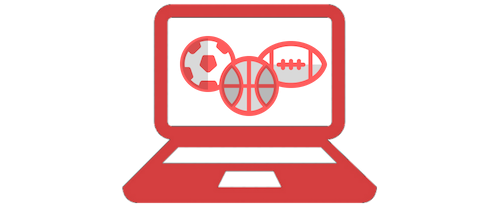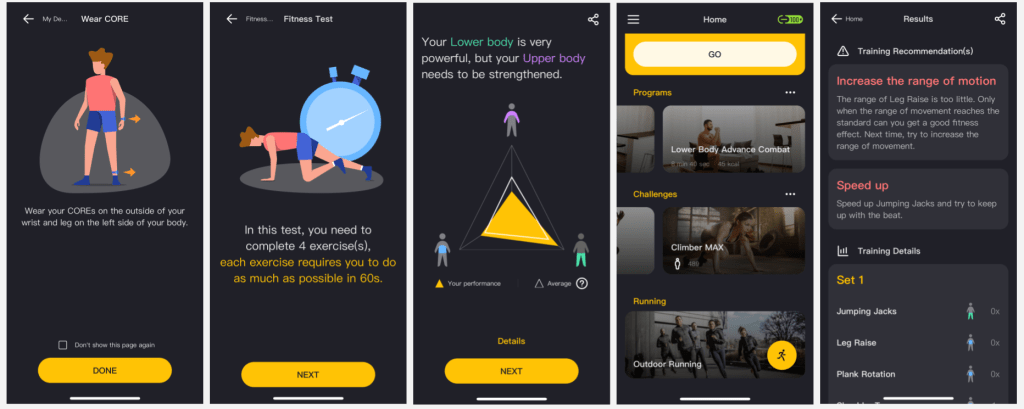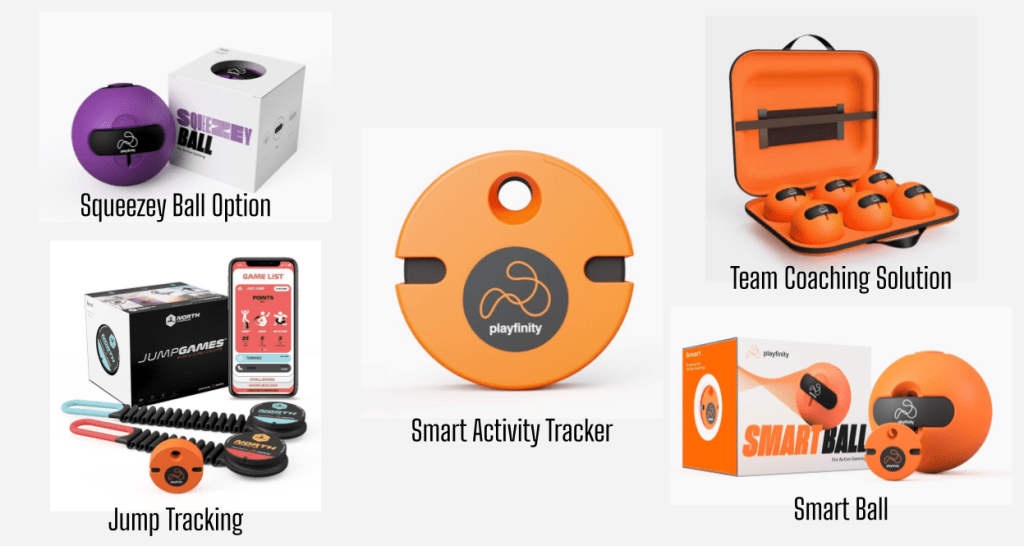Hello sports tech peoples. It has been a whirlwind first half of the year and still so much uncertainty to (face to face) events happening around the world. Some of us might have recalled there were rumours or fears that the Tokyo Olympics might be canceled because the Covid situation was not ideal. But thankfully the organisers did what they could, pushed through and it happened in the end. And how good was that? Watching the games on telly was really satisfying and uplifting. Moments when the cameras panned out from the competition grounds/pool and captured the empty spectator seats was still a painful reminder that we are in the midst of a pandemic. But kudos to the athletes who despite a lack of spectators to spur them on, still put up their best performance. 23 world records were broken in the Tokyo Olympics. Quite a few countries claimed their first ever Olympic medals and some their first gold medals. There were new disciplines added in the Tokyo Olympics, including 3×3 basketball, surfing, skateboarding, sport climbing, baseball/softball, BMX freestyle and karate. I think adding these new disciplines definitely injected some freshness into the games and it not only broadens the type of sports included, it also introduces these sports to a wider audience. For example, skateboarding has really grown in popularity in Japan since it was included and I have heard many people say they want to try skateboarding after watching the games. So it has definitely stirred up something.
Coming back to the purpose of this post, we have got a bunch of really interesting shoutouts. There are some interesting sports tech hardware that are launched or being launched and a pretty cool application of Augmented Reality (AR) + computer vision for performance tracking and talent identification. I know we dropped the ball on dishing out the June edition of Shoutouts. But I reckon this edition will be good enough to make it up. Let’s see how we go.
ASI Launched A Connected Athlete Tracker To Automate Data Workflow
Athlete tracking using IMUs and GPS or GNSS for outdoor sports is pretty common these days. Whether it’s in team sports or endurance sports, location (GPS/GNSS) and motion data (IMU) provides information and trends that helps athletes and coaches understand how the athletes are performing. Those data and past trends also help with planning ahead and hopefully sets the athlete and team for future success.
The protocol/workflow in most athlete tracking systems are quite similar. The athletes put on a vest (or tank top) that has a pocket at the back just below the neck. The athlete tracking sensor is turned on and placed in those pockets, and the athletes proceed with the training. In some cases, users are advised to only place the sensors when the GPS/GNSS signal is locked-in to the new location. Then once the training or session is done, the sensors are removed and placed in their docking stations to be charged, and for all the data to be downloaded for post-session analysis. Where real-time tracking is required, there will usually be an additional piece of hardware required – either an antenna or a wireless hub. Typically, in real-time tracking, the data is in lower ‘resolution’ so that the transmitted data packages are smaller. But the full resolution of the data can still be assessed when the sensors are plugged in at the end of the session.
Recently, Advanced Sport Instruments (ASI) released a new sensor that aims to improve the workflow of athlete tracking and allow users to effectively use the sensor hardware with existing athlete management systems (AMS). The AdMosLive looks not that much different (in terms of shape and size) from its predecessor AdMos or the FieldWiz. The key (hardware) difference is it’s ability to send data in real-time through a cellular network. That could be via 2G, 4G or even the 5G network (when it is available). Users of the AdMosLive no longer need to dock and download the data to do post processing. As the data is being captured, they are uploaded to the cloud to a target of the user’s choice. The target could be an athlete management system or video analysis tool or broadcasting service. ASI provides an open API for users (developers) to perform a full integration so access the raw data as it is uploaded in real-time. This cuts out the manual steps that were previously required to access sensor data and the connectivity also better facilitates remote training and coaching and also safety tracking of athletes in extreme sports.
So ASI is trying to reach out to not just developers but also existing AMS platforms or fan engagement solutions or sports organisations looking to integrate a sensor hardware solution. ASI is also open to customising sensor solutions for specific needs. You can check out some of their existing partner solutions here: link. Also, check out their launch video below:
GetMetrix Has Launched Their AR Football Improvement & Training App
GetMetrix recently launched their football improvement app for the iPhone. It is targeted at youth football players (13-18) who want to know their current skill level and abilities, how they stack up against others and how they could be improving them. The GetMetrix app allows each football player to create an account for themselves, and uses Augmented Reality (AR) to help the player setup standardised testing stations, track and evaluate the tests using the iPhone camera and computer vision, and gives the player a score or grading at the end. There are six skills that the GetMetrix platform measures and monitors, they are Dribbling, Shooting, Agility, Pace/Acceleration, Passing and First-Touch. Beside needing an iPhone and a football, some cones would be required to set up the tests. Watching the video demo below of an AR assisted assessment would make much more sense:
When a player completes the testing of all six skills, plus fill in some of their details such as age and player position, they get their complete Player Card. The concept of a Player Card would sound familiar for people who are into gaming and especially for those who play the FIFA video games. Also, if you happened to have followed our blog for a while, you might have seen a previous mention of a Player Card by an app called myKicks that has a very similar concept. The reason is they essentially came from the same team. They have simply made a shift (or two) in their branding/strategy in the last few years and continued developing this product with the same aim to help youth football players take their game to the next level.
Once a player has established their Player Card, it becomes evident where their strengths and weaknesses are. But what should they do about it besides comparing it with their peers? First of all, the GetMetrix team has worked with leading football scientists to develop hundreds of training videos to suit different levels. Secondly, the smarts in the GetMetrix platform can generate a personalised training program based on the player’s Player Card to help them improve in an optimal way. The custom training programs do require a subscription (GetMetrix Plus). It will be exciting to see how this would potentially integrate with talent identification programs for various clubs and leagues going forward. If you are a youth football player who would like to know how well you are doing, do check them out and give them a go (app link) or at least check out their video below:
RaceFit Developed A Wearable Motion Tracking Platform That Works For The Elite & Everyday Athlete
RaceFit is a wearable tech company based in Hong Kong and their motto is “Understanding Human Motion”. They have developed a suite of motion tracking solutions to help manage athlete training, exercise and even to assist caring for older people. For their athlete training solution, they designed a wearable full body suit that houses seven sensors which they call RaceFit Cores. The Cores have what we find in typical IMUs (accelerometers, gyroscopes, magnetometers) and they are inserted into holders or pockets adhered onto the suit. The holders locations are at the knees, hip, upper back, lower back and elbows. One of the applications they have found themselves in is coaching a Fencer. The coach relies on the RaceFit Suit coupled with smart algorithms (built on the Microsoft Azure environment) to identify where the Fencer could work on during the coaching sessions. He prescribes specific exercises and activities in the Fencer’s daily workout plan to help her improve. Then he uses the platform to remotely monitor her daily workout progress so that he can plan for their next coaching session more effectively.



Using the same Core, RaceFit also came up with a scaled down consumer version that comprises of two Cores on velcro bands. Paired with their smart phone app, users can track a variety of HIIT (High Intensity Interval Training) workouts on the app using one Core strapped on the wrist and another strapped on the ankle. The RaceFit Core Fitness app is like a virtual workout partner with built-in smarts to identify the users’ strength and weaknesses (through a fitness test), help them set goals, recommend workouts and keeps track of their progress together with subsequent training recommendations. Besides HIIT workouts, users who run can also track their outdoor running activities using the two Cores strapped on both ankles. The Cores provides additional data to your runs such as step angles and impact forces.
The team at RaceFit doesn’t just stop here. They are continually developing and improving their platform for fitness and health. As mentioned earlier, they have a monitoring solution for older people in aged care facilities. They are also working on customisable remote coaching and rehabilitation applications. If you are a fitness or health organisation looking to incorporate motion tracking IoT hardware, do check out them or contact them here: link. Also, check out the video below where their CXO explains a little more about their platform:
Backyard League Makes Practicing Baseball Fun Using A Smart Ball
Playfinity is a company that started with the aim of getting kids more engaged in sports. The founders of Playfinity realised that children were spending more time playing computer/video games than outdoor games and it is not doing them any good physically, mentally or socially. Add to that, they found that a huge percentage of kids who leave team sports by the age of 13 are leaving because they don’t find it fun anymore. So what Playfinity is doing is bringing fun back to sporting activities by incorporating technology and interactive gaming experience into sports.
Since they started in 2016, they have developed a smart activity tracker that can basically be used in a variety of activities including handball, general ball throw and catch activities, and tracking jumps on a trampoline. Though not stated on their website, the smart activity tracker probably has inertia sensors or an IMU so that it can track acceleration, rotation and direction. Then the purpose built balls are simply designed to house the smart activity tracker and they become smart balls. These smart balls can capture metrics of throws or kicks such as speed, rotation, flight time etc. With tracking trampoline jumping, they designed a strap that can secure the smart activity tracker to a user’s ankle, so it tracks the user’s jumps. Of course, the activity tracker is connected to the user’s smart phone (via Bluetooth) and their interactive apps. The interaction and feedback from the apps help the kids stay motivated to participate because they can be challenged by their friends and they can see how well they have been performing.
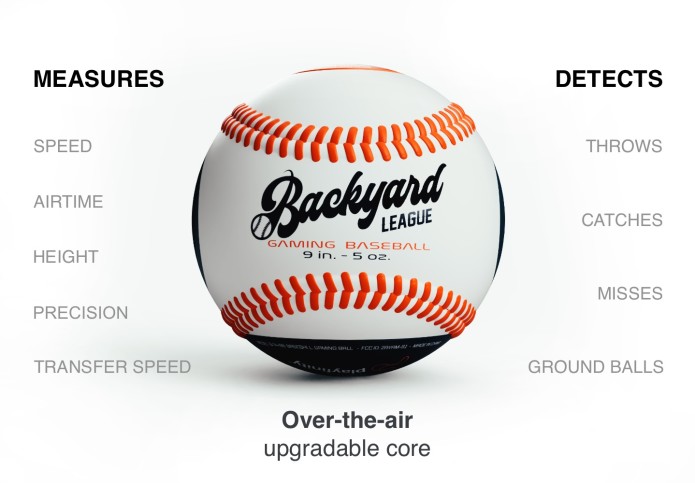
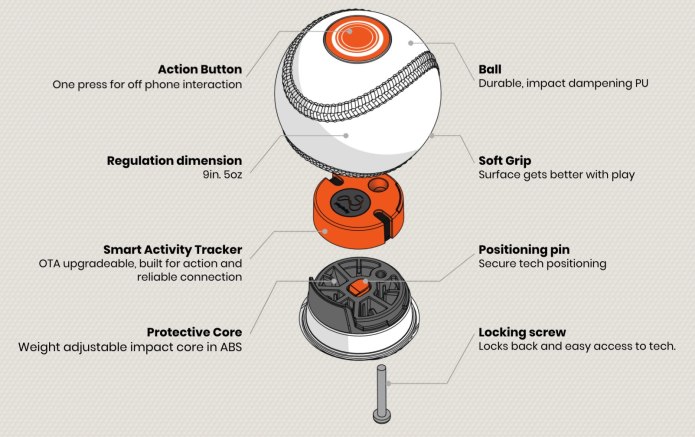
More recently, the team at Playfinity have been working on a smart ball specific to baseball and the product is called Backyard League. The hardware is quite similar to their earlier works except that the ball is designed to look like a regular baseball (in terms of size, weight, look and feel) and there are some differences in how the smart activity tracker is placed in the ball. Plus they provide balance tuners so that users can adjust the weight and balance. Another key component of the product is the gaming aspect. They built a smart phone app that connects to the ball and breaks down the ball data into metrics that are relevant to baseball. Besides measuring things like speed, airtime, height etc, the system can also detect different throws, catches misses and ground balls. The platform is designed to keep kids engaged through a variety of games and global challenges while allowing them to know their performance of throwing and catching over time. They don’t claim that their speed measure is as accurate as a radar gun but they believe the smart balls (trackers) are consistent enough for comparing against each other. They do warn against batting the ball because it is designed for throwing and not to take a hit from the bat. Also, they even provide their API for developers who want to make their own games using their smart ball. They are currently on a crowdfunding campaign on Indiegogo: link. You can also check out their demo below:
One Last Thing – Podcasts
Similar to the last shoutouts I did, I wanted to highlight a few interesting sports tech and sports science podcasts that I think it will be worth your time; particularly if you are a product developer of sports products.
- Sports Tech Feed – The role of consumer brands in driving innovation with Dr Tom Waller, lululemon (link)
- BMJ Talk Medicine – Episode 482 – Superspikes FTW? Footwear choice for athletes with Dr Dan Bonanno. (link)
- Sports Loft – Finding product market fit with GetMetrix & Fevo. (link)
And that is our sports tech shoutouts for July 2021. If you would like more information about any of the above, or maybe you caught on to something and would like to chat about it, feel free to reach out or leave a comment below. If you enjoy our content, please do share it using the links below or subscribe to our blog here: link. Thanks for spending time with us! I leave you with the trailer for the Tokyo Paralympics which would be equally if not more exciting than the Olympics!
